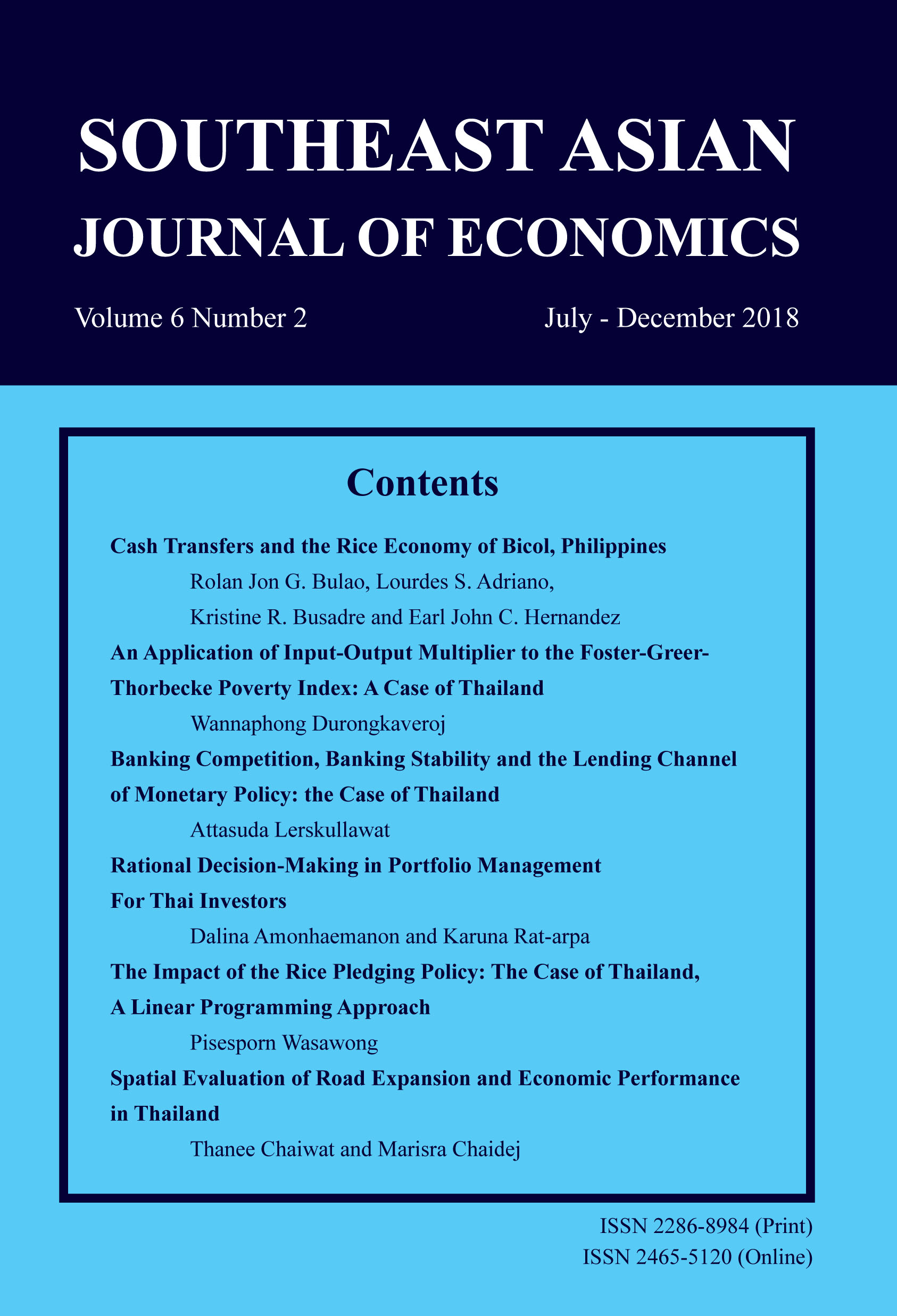Asset Pricing Puzzle in Emerging Markets: Evidence from Thailand
Keywords:
Asset Pricing Puzzle, Hansen Jagannathan Bound, Total Return Index, Asian Financial Crisis, Habit Persistence UtilityAbstract
The feasible region of mean-standard deviations of stochastic discount factors, called the Hansen Jagannathan bound, is constructed using quarterly real returns on Thailand’s stocks and savings during 1993-2010. The stock returns are calculated stock by stock, including capital gains, dividends, and values of rights offering. The asset pricing puzzle is detected. The observed volatility of stochastic discount factors, generated by the standard Real Business Cycle model, is inconsistent with the feasible region. The inclusion of the 1997-8 Asian financial crisis alleviates the puzzle, but inadequately. I use alternative stochastic discount factors generated by different utility functions. Habit persistence structure increases the volatility of discount factors and partly resolves the puzzle. However, the puzzle still remains.
Downloads
How to Cite
Issue
Section
License
The submission of a manuscript implies that the paper is an original work and has not been published elsewhere. The author(s) authorize the journal to reproduce or distribute the paper in printed or other electronic forms.







